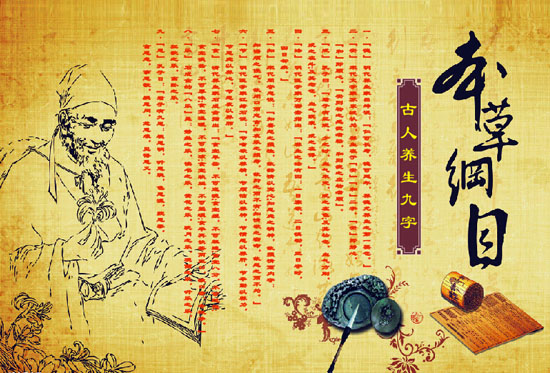Li Shizhen was a great medical and pharmaceutical expert. He was born in the reign of Emperor Zhengde of the Ming Dynasty (1518) in Qichun, Hubei Province. Compendium of Materia Medica, revised and compiled by him, is a great collection of traditional Chinese herbal medicine. It is called "the Great Pharmacopoeia in the East".
He was born in a family of doctors. Both of his grandfather and father were local prominent doctors. In his childhood, he liked to read various Chinese medicine books and frequently went out with his father and elder brothers to treat patients. After his three failures in the imperial examination, he was determined not to pursue official ranks. He started to concentrate on medical study and medical practice. Because of his diligence and intensive study, his medical skill improved rapidly. During his practice, he cured many disputed and difficult diseases and quickly established his fame. Later he was granted a post in the Imperial Hospital in the capital.

The traditional Chinese medicine is a mixture of natural herbs, bodies of animals, minerals in different proportions. Chinese Materia Medica was a record of traditional Chinese medicine. During Li's study and practice, he found many mistakes in the old Chinese Materia Medica and the compiling way was confused. So he made up his mind to compile a complete, accurate and new Chinese Materia Medica. To realize his grand ambition, Li Shizhen read and referred to a large number of medical books and other works; he did on-the-spot investigation for herbs by making long journeys all over the country. On the basis of the old Chinese Materia Medica, he corrected the mistakes, eliminated the inaccurate parts, reorganized the classification, collected the samples, drew the pictures, added a large quantity of new contents and systemized the abundant traditional Chinese medicine knowledge before the 16th century. It took him nearly 30 years and finally ended in 1578 with the name Compendium of Materia Medica.
Compendium of Materia Medica recorded many kinds of traditional Chinese medicine in detail. Its clear classification, thorough elaboration and a large number of prescriptions exerted great influence on the traditional Chinese medical practice and development in the following years. On the beginning of the 17th century, this work was introduced to Japan, and then to Korea and European countries and translated into Japanese, English, French, German, Russian and Korean. It is not only a traditional Chinese pharmacopoeia, but also a book which categorized plants and minerals in detail in early times in the world. Therefore, it has tremendous influence in the world.

![Diseases, Symptoms, tcm, [tcmwindow.com]](/uploadFile/adImg/2015/11/11/f5cbfcc0-4df5-4646-9b9a-f316651a0199.jpg)





